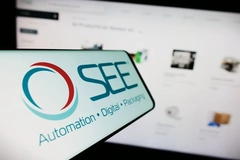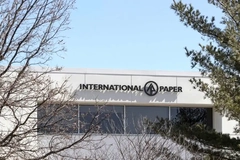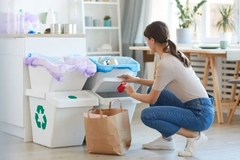Sealpac slashes plastic with new plant-based food pack solutions

13 Sep 2022 --- Sealpac has unveiled its latest packaging solutions for plant-based foods. The products are designed to “optimize freshness while using minimal plastic” and reduce waste from the container and its contents.
Most of the products are made from a combination of cardboard and plastic film. While plastic remains a high contributor to harmful effects on the planet, it is necessary for maintaining the freshness of foods so as to not contribute to food waste.
“The biggest challenge is to reduce plastics while maintaining the shelf life of the product inside,” Marcel Veenstra, marketing and communications manager at Sealpac International, tells PackagingInsights.
Reducing plastic
A central feature of all the created packages is only utilizing small amounts of plastic. The items that include thin films of plastic can all be removed from their cardboard counterparts.
“There are quite a number of hybrid packaging solutions, which combine cardboard and limited amounts of plastics,” says Veenstra.
 Sealpac’s plant-based food packages value plastic and food waste reduction. “Allowing these components to be easily separated, and by using mono-plastics, we are still able to offer full recyclability of the hybrid packs.”
Sealpac’s plant-based food packages value plastic and food waste reduction. “Allowing these components to be easily separated, and by using mono-plastics, we are still able to offer full recyclability of the hybrid packs.”
The ability to isolate the packaging elements from one another and recycle them in their respective categories meets 2030 EU recycling requirements.
Of the new packages, the eTray lessens the plastic content by up to 40% compared to conventional trays, and the FlatSkin uses “less plastic and more fiber,” the company states.
One of the more complex items in terms of manufacturing components is the EasyLid. Sealpac says the EasyLid “uses significantly less material than comparable packaging,” reducing CO2 emissions and saving on transport and storage costs.
“Well-established packaging systems can also be made more sustainable by using particularly thin film or by using recyclable mono-materials, such as PE or PP,” explains Veenstra, concerning improving existing packaging designs’ environmental sustainability.
Keeping it fresh
Last month, Sealpac spoke to PackagingInsights about the increasing issue of food waste.
The primary tool of packaging is to preserve what it contains while keeping plastic minimal is of significant importance to decrease greenhouse gas (GHG) emissions; food waste is also an unignorable contributor to environmental damage.
“In designing sustainable solutions, it is important not to forget the original function of packaging, which is to protect the product to keep it fresh for longer. By doing so, contributing to less food waste,” describes Veenstra.
The recent rise in supermarkets removing their “best by” dates from food packaging is another industry attempt to diminish food waste.
According to Innova Market Insights data, 51% of global deli meat shoppers consider food safety vital in packaging, demonstrating that while consumers are concerned with purchasing environmentally friendly packaging, doing so will not come as a compromise on the food’s safety.
“The best packaging is the one that offers optimal product protection and at the same time minimal use of materials,” underscores Rico Ménard, head of packaging development at the Swiss manufacturer Micarna.
Following the trends Trends still heading in the direction of environmentally sustainable packaging.
Trends still heading in the direction of environmentally sustainable packaging.
Sealpac offers customization to its customers based on their needs. The aforementioned packages that contain a cardboard base can have information printed about the item to inform the patron or add brand-specific features to increase recognition.
Packaging plays a prominent role in giving customers desired details and creating a look that stands out as visually appealing and discernible from other products. According to Innova Market Insights, 38% of global deli meat consumers value product information and 10% value product promotion as an essential packaging concern.
Sealpac’s packaging features consider visual and ecological trends, “making them ideally suited for trendy products like alternative protein,” says Veenstra.
Veenstra also calls on other companies to join the responsibility of creating more environmentally conscious packages.
“Each company within the industry has a responsibility to support the change to more sustainable packaging. This even includes equipment manufacturers like ourselves.”
SealedAir recently designed an automated printing system that reduces packaging material waste. More packaging companies are feeling pressure from customers and the industry to continue to innovate in reducing waste and err on the side of environmental sustainability.
Predicting future trends in the packaging industry, Veenstra says in the coming years, the discussion will remain as to what is the most sustainable material to use for packaging
“Cardboard is in strong demand now, but will it stay that way? Or will we see mono-plastics take over?” he questions.
By Sabine Waldeck











